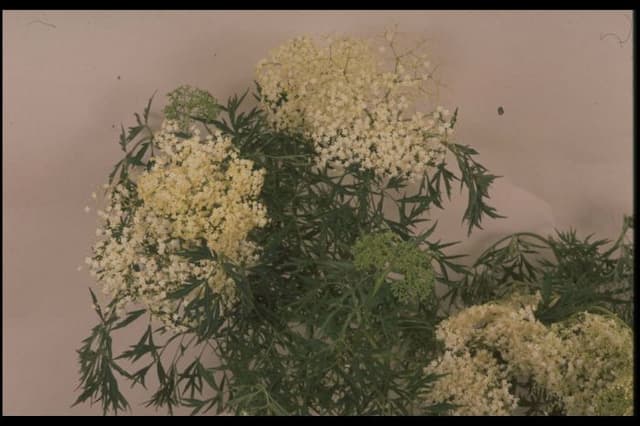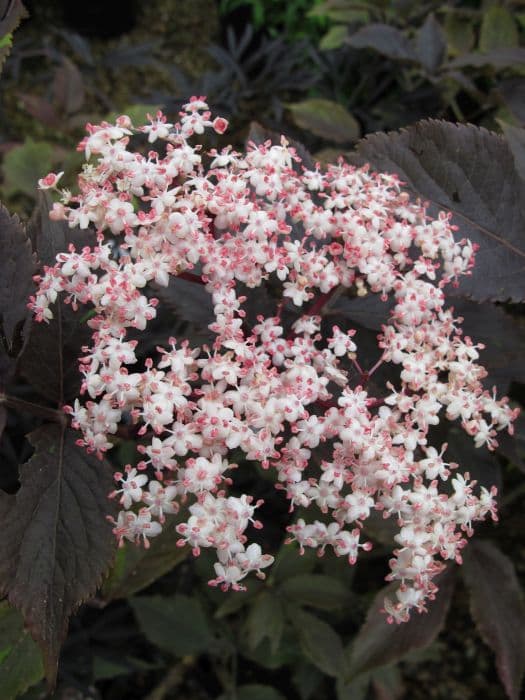Bodnant Viburnum Viburnum × bodnantense 'Dawn'

ABOUT
Bodnant viburnum 'Dawn' is a deciduous shrub that is well-known for its attractive and fragrant winter blooms. The shrub showcases oval-shaped leaves that present a fresh green color during the growing season, and they may turn shades of red or bronze in the autumn before falling off. It is during the late winter to early spring that this plant truly comes into its own, with the branches coming alive with clusters of pinkish-white flowers. These blossoms often appear in dense clusters along the stems and release a delightful fragrance that can be enjoyed even on chilly days. The flowers tend to develop from deep pink buds, unfurling into lighter pink-white blooms that offer a stark and beautiful contrast against the bare stems of the plant. After flowering, the Bodnant viburnum will produce small, dark oblong fruits that can attract birds and other wildlife to the garden. The overall form of the shrub is typically upright and multi-stemmed, with a rounded shape that contributes to its ornamental value in landscape designs.
About this plant
 Names
NamesSynonyms
Bodnant Viburnum, Bodnant Snowball.
Common names
Viburnum × bodnantense 'Dawn'.
 Characteristics
CharacteristicsLife cycle
Perennials
Foliage type
Deciduous
Color of leaves
Green
Flower color
Pink
Height
8 feet (2.4 meters)
Spread
6 feet (1.8 meters)
Plant type
Shrub
Hardiness zones
6
Native area
Hybrid
Benefits
 General Benefits
General Benefits- Winter Flowering: Blooms during the late fall to early spring when few other plants flower.
- Attractive Fragrance: Has sweetly scented pink flowers that can add a pleasant aroma to the garden.
- Ornamental Value: Adds visual interest to gardens with its flowers and also the textured leaves.
- Pollinator Friendly: Attracts bees and other beneficial insects, supporting local ecosystems.
- Low Maintenance: Requires minimal pruning and care once established, making it an easy choice for gardeners.
- Drought Tolerance: Once established, it can tolerate periods of dry weather, reducing the need for frequent watering.
- Long-Lived: This shrub is relatively long-lived, providing structure and interest in the garden for many years.
- Improved Biodiversity: Supports wildlife by providing shelter and food with its berries and dense foliage.
- Year-Round Interest: Offers visual interest throughout the year with its flowers, foliage, and sometimes berries.
- Hardiness: It's cold-hardy and can survive in a range of climates which makes it versatile for different landscaping needs.
 Medical Properties
Medical PropertiesThis plant is not used for medical purposes.
 Air-purifying Qualities
Air-purifying QualitiesThis plant is not specifically known for air purifying qualities.
 Other Uses
Other Uses- Viburnum × bodnantense 'Dawn' can be used as a natural privacy screen due to its dense growth habit, especially when planted in a staggered row or as a hedge.
- The branches of 'Dawn' may be cut in the winter and brought indoors for forced blooming, adding a splash of color and fragrance to home decor.
- The shrub's tangled branches can provide a secure nesting site for birds during the breeding season.
- Dried branches of 'Dawn' can be incorporated into rustic craft projects or used as a base for making natural wreaths and other decorations.
- The fall foliage of this shrub offers an attractive backdrop for autumn-themed photography or garden tours.
- Its dense foliage can be used to reduce noise pollution in urban gardens by absorbing sounds.
- The plant's varying bloom times can be used by educators to teach students about the effects of weather and climate on plant life cycles.
- The shrub can act as a windbreak in coastal or windy areas, protecting smaller plants in the garden.
- Viburnum × bodnantense 'Dawn' is useful for practicing pruning techniques, as it is a hardy plant that can tolerate heavy cutting back.
- The wood of 'Dawn' is suitable for small woodworking projects, given its moderate hardness and fine grain after proper drying and treatment.
Interesting Facts
 Feng Shui
Feng ShuiViburnum is not used in Feng Shui practice.
 Zodiac Sign Compitability
Zodiac Sign CompitabilityViburnum is not used in astrology practice.
 Plant Symbolism
Plant Symbolism- Renewal: Viburnum × bodnantense 'Dawn', also known as Bodnant Viburnum, flowers during the late winter to early spring, symbolizing the idea of new beginnings and the renewal of life that comes with the end of the cold season.
- Persistence: Its ability to bloom in the coldest months also represents persistence and endurance through difficult times.
- Inner strength: The plant’s sturdy nature and the ability to withstand winter temperatures can symbolize inner strength and resilience.
- Bridging seasons: Because the Bodnant Viburnum's blooming season connects the end of winter and the beginning of spring, it symbolizes transition and the bridging of different phases in life.
 Water
WaterFor the Viburnum 'Dawn', it is essential to maintain a consistent watering schedule to ensure the soil is evenly moist but not waterlogged. During the growing season in spring and summer, water deeply once a week with approximately 1-2 gallons depending on the size of the plant and the weather conditions. Reduce watering in the fall and further in winter to match the plant's lower water requirements during dormancy, allowing the soil to dry slightly between watering.
 Light
LightThe Viburnum 'Dawn' thrives best in an area where it can receive full sun to partial shade. The ideal lighting condition is to provide it with at least 4 to 6 hours of direct sunlight daily; however, it will also tolerate light shade, especially in hotter climates where some afternoon shade can protect it from the intense heat.
 Temperature
TemperatureIdeally, the Viburnum 'Dawn' prefers a temperature range between 60°F to 75°F for optimal growth. It can withstand winter temperatures down to 20°F, but should be protected from frost. In the summer, it can tolerate up to 85°F, but it is best to avoid extreme temperature fluctuations.
 Pruning
PruningPruning the Viburnum 'Dawn' is important to maintain its shape, remove any dead or damaged branches, and promote vigorous growth. The best time to prune is late winter or early spring, just before the onset of new growth. This plant flowers on old wood, so be sure to prune immediately after flowering if shaping is necessary to avoid cutting off next year's blooms.
 Cleaning
CleaningAs needed
 Soil
SoilBodnant Viburnum thrives in well-drained, loamy soil enriched with organic matter, preferring a pH range of 5.5 to 6.5. A mix of two parts garden soil, one part compost or peat moss, and one part perlite or sand will create an ideal environment for this plant.
 Repotting
RepottingBodnant Viburnum, being a large shrub, is not typically repotted as it is usually planted directly into the ground. As a garden plant, it does not require repotting; instead, refresh the mulch annually and replenish soil nutrients with compost as needed.
 Humidity & Misting
Humidity & MistingBodnant Viburnum is quite adaptable and does not require specific humidity conditions; it tolerates the average outdoor humidity levels found in its growing zones. It performs well without the need for additional humidity adjustments.
 Suitable locations
Suitable locationsIndoor
Not ideal for indoor; best grown outdoors due to size.
Outdoor
Plant in sun or partial shade, sheltered from strong winds.
Hardiness zone
5-9 USDA
 Life cycle
Life cycleViburnum × bodnantense 'Dawn', commonly known as Bodnant Viburnum, begins its life as a seed, which germinates in spring after a period of cold stratification to break dormancy. The seedling then grows into a juvenile shrub, establishing a strong root system and beginning to form its woody structure. As it matures, the shrub enters a vegetative stage, where it develops the characteristic dense, upright habit, and broad green leaves. In the reproductive stage, usually from late winter to early spring, 'Dawn' produces fragrant pink to white flowers before the leaves fully emerge, offering winter interest. Following pollination, typically by insects, the flowers develop into small, dark, oblong fruits that mature by late summer to fall. Throughout its life, Bodnant Viburnum may undergo periods of pruning and maintenance to encourage vigorous growth and abundant flowering the following season.
 Propogation
PropogationPropogation time
Summer-early autumn
The most popular method of propagating Viburnum × bodnantense 'Dawn', commonly known as Bodnant Viburnum, is by softwood cuttings. This technique is typically carried out in late spring or early summer when the new growth is still flexible but starting to mature. Shoots that are about 6 inches (15 centimeters) long are selected and cut just below a node. The lower leaves are removed, and the cut end can be dipped in rooting hormone to encourage root development. The cutting is then inserted into a pot filled with a mix of peat and perlite or sand to provide good drainage. The pot is kept moist and in a shaded spot until roots have formed, which can take several weeks. Once rooted, the young plants can be potted on or eventually planted out in the garden.









